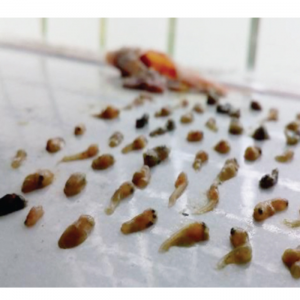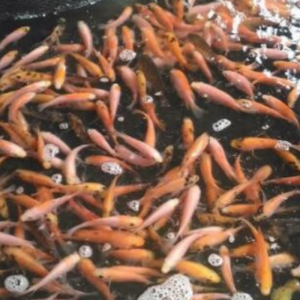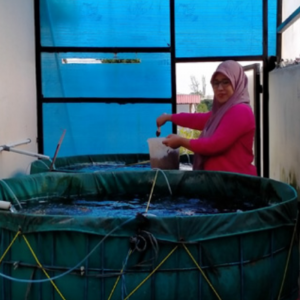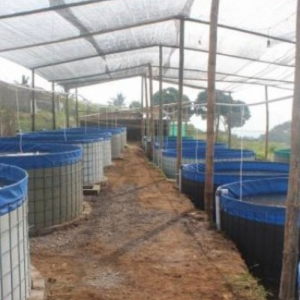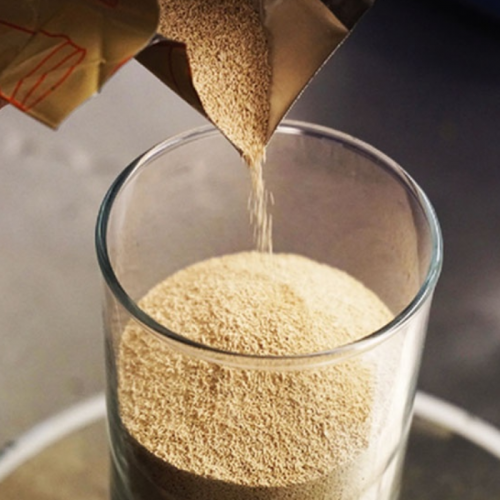
Fish Feed Yeast?
| Fri, 10 Jan 2020 - 13:57
Research has shown that raising tilapia with yeast and in biofloc environments has a significant growth effect.

Tilapia is a species of salted and widely raised fish in many countries around the world such as China, Indonesia, Thailand, ... (Abu et al., 2005). As the farming area and production increase, the potential for environmental pollution is increasing, so the study of biological agent influences is a positive trend contributing to environmental stability and limiting disease in ponds. feed.
Biofloc technology is a new biotechnology solution that contributes to the development of aquaculture towards sustainability, biosecurity and environment friendliness thanks to the following outstanding capabilities: (1) Elimination Free ammonia in pond water by conversion to protein in heterotrophic bacteria biomass in biofloc, (2) Aquaculture animals use biofloc as feed, so the ratio of protein conversion in feed increases to 45-50%, (3) Improve biosecurity level and reduce disease risk.
According to Azim and Little (2008), raising tilapia in biofloc results in faster growth rate and better water quality than non-biofloc. Similarly, Guozhi et al (2014) suggested that when raising tilapia in the biofloc system, the harvested fish volume was 22% higher and the feed conversion ratio was 18% lower than that of the fish raised in the circulatory system. whether or not biofloc. Previous research has evaluated the ability to use yeast in the biofloc system to improve the nutritional quality of biofloc, improve digestibility for livestock, and stimulate growth. Therefore, the purpose of this study is to compare the effect of yeast as a protein source instead of fish meal in tilapia diet ( Oreochromis niloticus ) cultured in either clear water or biofloc conditions.
The experiment was arranged completely randomly with 4 treatments, immature tilapia (initial weight of 29 ± 3.2 g), randomly distributed into 24 500 L conical tanks to conduct experiments. experience. The treatments used feed had the same 5% protein and 19 KJ / g energy. Feed treatments in turn with yeast dosage as follows 0%, 30%, 60% and 100% of fish meal protein were replaced by yeast. Fish were raised for 3 months, fed by hand twice a day.
12 tanks in a recirculating aquaculture system (RAS) with clear water, with mechanical and biological filters and an average of 15% daily water replacement. The other 12 tanks were connected to four open 10-m3 open biological tanks initially bred with Bacillus subtilis and nutrients to achieve a C: N ratio of 10, supporting bacterial growth.
At the end of the experiment, the amount of feed, the amount of protein, weight gain, daily weight gain, specific growth rate, feed conversion rate, protein efficiency rate, survival rate and body index of the fish Tilapia has been identified.
Result
After 3 months of the experiment, fish raised in clean water had lower growth weight than those in biofloc supplemented with yeast. Although the amount of feed and protein was nearly identical in both media, significantly higher growth was observed in fish cultured in biofloc media, accompanied by feed conversion rates and efficiency. The protein improved significantly and reduced mortality.
In the yeast fermentation treatments, the 60% yeast fermentation treatment showed that the final weight, the relative and absolute growth rates were the highest and the FCR values were the lowest.
From the study, it can be concluded that people can use yeast with a 60% dosage to replace fish meal without affecting the growth and survival of tilapia. At the same time, fish cultured in biofloc the environment will bring high efficiency, stimulate growth, thereby raising the survival rate to bring economic efficiency for farmers.
Source: tepbac.com













